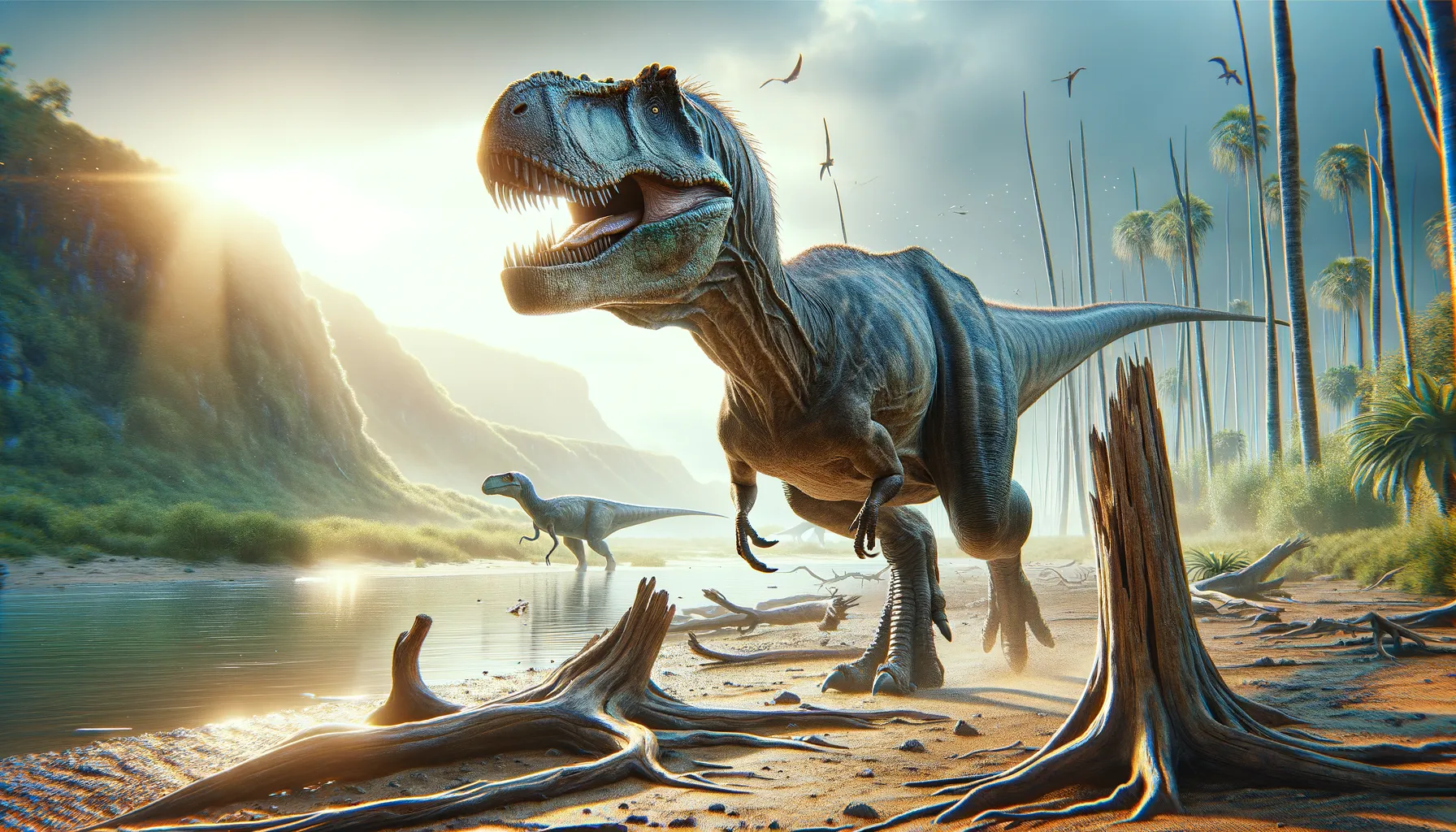
Saltriovenator
Ancient predator with primal power!
Period
Jurassic
Length
Roughly 7 to 8 meters long.
Height
About 1.5 meters at the hip.
Weight
Approximately 1 ton.
Saltriovenator lived during the Early Jurassic period and is notable for being one of the earliest large theropods. Its structure suggests it was a powerful predator that roamed the land millions of years ago. Despite its size, it occupied a critical evolutionary position, showcasing a blend of primitive and more advanced features that offer insight into the evolution of later, more well-known theropods.
Diet
Saltriovenator was a carnivore, feeding on smaller dinosaurs and other animals it could overpower. Its diet consisted largely of meat, as evidenced by its sharp teeth.
Hunting
It likely used its strong jaws and teeth to capture prey, relying on surprise or ambush tactics rather than high-speed chases. Its hands, equipped with claws, may have also helped in holding onto its prey.
Environmental challenges
During its time, Saltriovenator faced shifting climates, with varying temperatures and sea levels affecting food availability. Competition for food with other predators would have been intense, requiring it to adapt to the changing environment. Natural disasters like volcanic eruptions might have periodically altered its habitat, forcing migration to find suitable living conditions.
Speed
Moderate, as it was built for strength rather than speed.
Lifespan
Lived around 20-25 years in the wild.
First discovery
Discovered in 1996 in northern Italy by amateur paleontologist Angelo Zanella.
Fun Facts
- Saltriovenator was a large meat-eating dinosaur that lived during the Early Jurassic period, around 200 million years ago.
- It was discovered in Italy, which is quite special because it's one of the few dinosaur fossils found in the country.
- Saltriovenator is named after Saltrio, the Italian town near where it was found, and 'venator', the Latin word for 'hunter'.
- This dinosaur is considered to be one of the earliest known large theropods, the group of dinosaurs that includes Tyrannosaurus rex.
- When alive, it likely weighed about one ton, making it a heavy dinosaur for its time period.
- The fossil remains of Saltriovenator show unusual features in its hand bones, helping scientists learn more about the evolution of theropod hands.
- Saltriovenator was about 8 meters long, making it a big predator very early in the dinosaur age.
Growth and Development
Saltriovenator would have undergone significant growth from birth, starting as a small hatchling. It likely experienced rapid initial growth to avoid predation, slowing down as it reached maturity. Internal bone structures suggest a prolonged growth phase, important for reaching its large size.
Habitat
Saltriovenator lived in a region that was a mix of coastal and inland habitats, rich in lush vegetation. This environment provided ample prey and diverse ecosystems in which it could thrive. Its area was likely marked by seasonal changes that required adaptability for survival.
Interaction with other species
Saltriovenator might have been both predator and prey, interacting with other dinosaurs of varying sizes. Territorial disputes with similar-sized predators could have been common, impacting its hunting and roaming behaviors. It might have coexisted with plant-eaters, maintaining an ecological balance.
Natural lifespan
Its natural lifespan likely ended due to predation or environmental factors in its 20s.
Reproduction
This dinosaur likely reproduced by laying eggs, with nests possibly guarded by parents. The eggs were probably laid in safe, hidden areas to protect them from predators. Young Saltriovenator would have been vulnerable and required rapid growth to reach safety.
Social behaviour
Saltriovenator may have been solitary, as typical of many large theropods, to reduce competition for food. Occasional groups might have formed, especially during breeding or in areas with abundant food sources. Communication with others may have been limited to necessary interactions.
Fossil locations
The primary fossils of Saltriovenator were found in the Saltrio quarry area, near Milan, Italy. Its remains have provided significant insights into the early theropod adaptations and behaviors. Discoveries in this region have also highlighted the importance of European sites in understanding dinosaur evolution.
